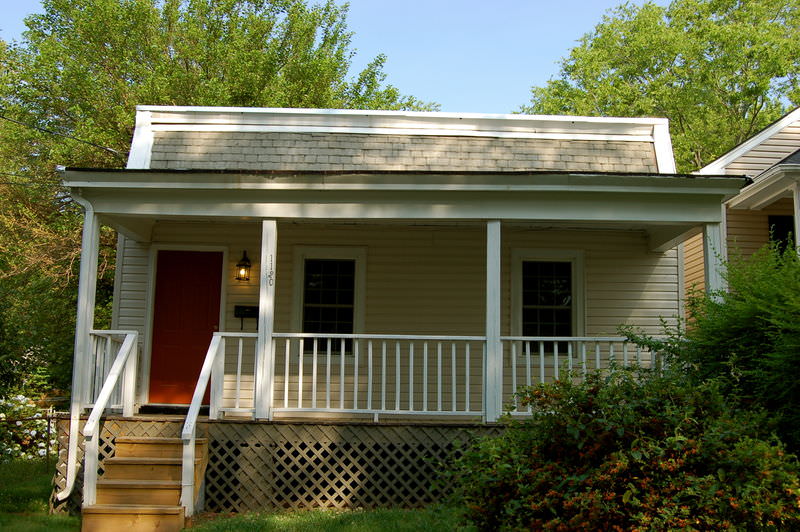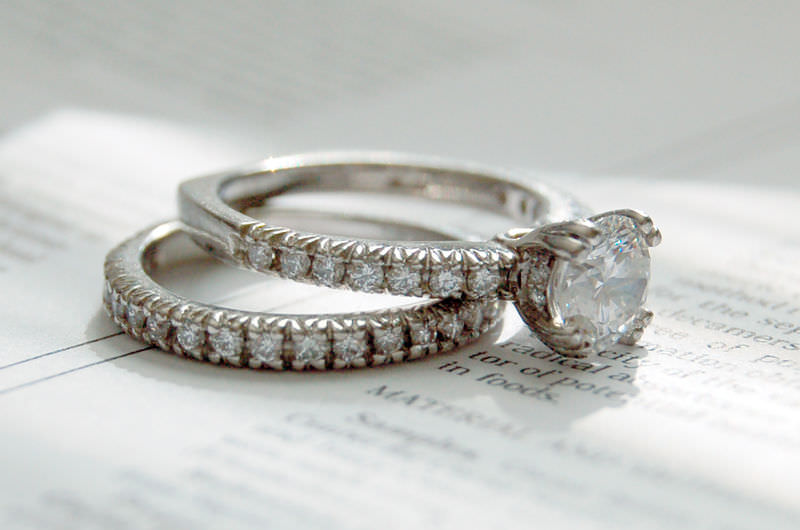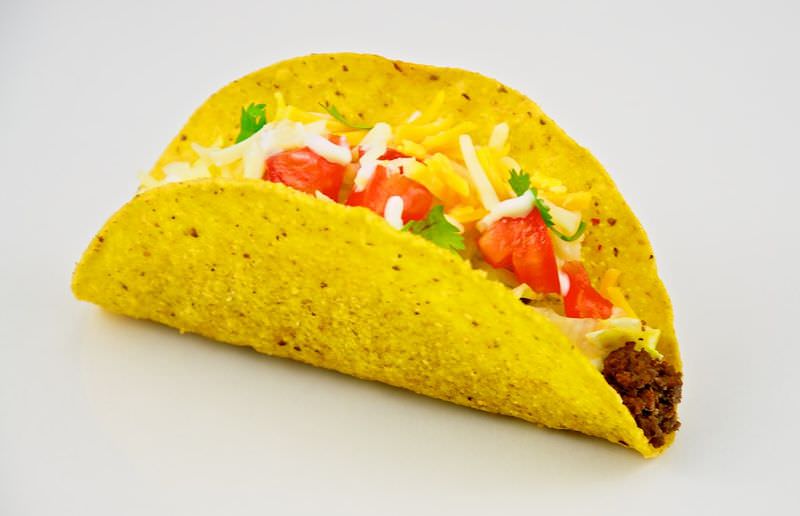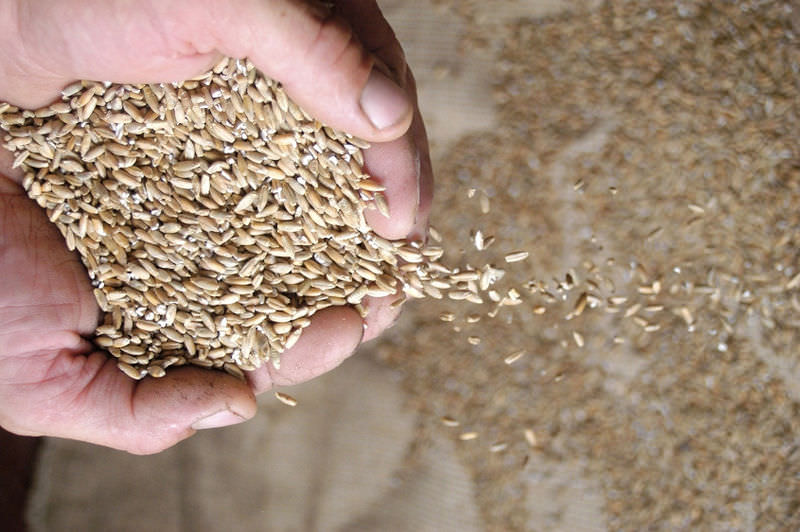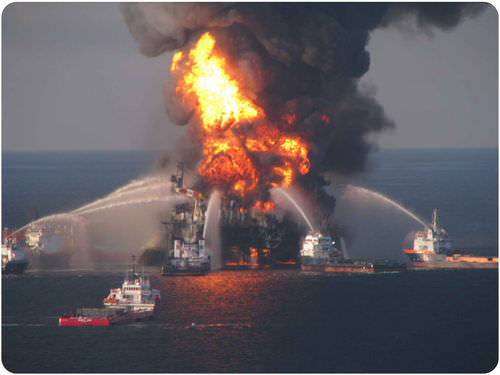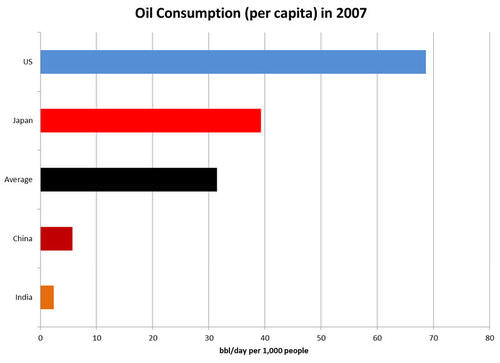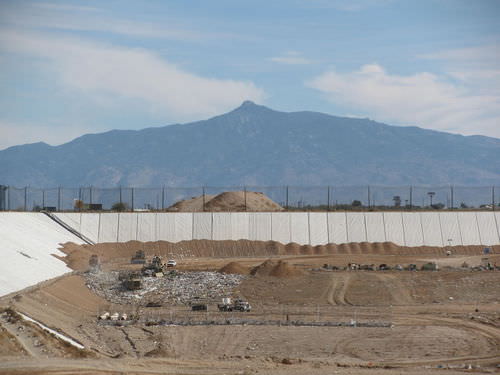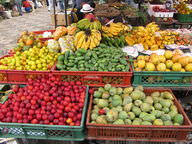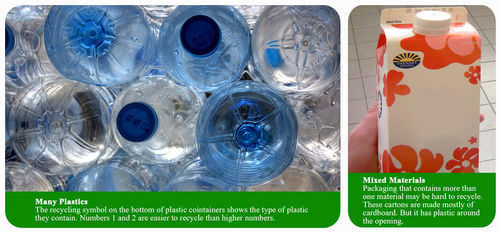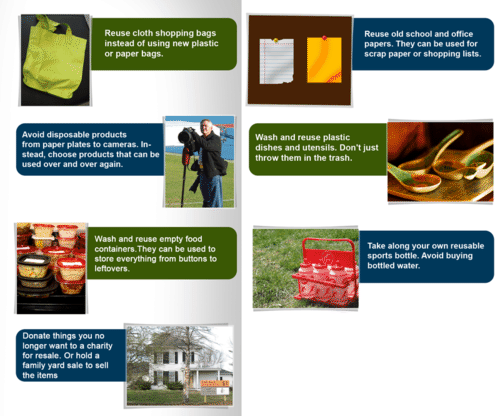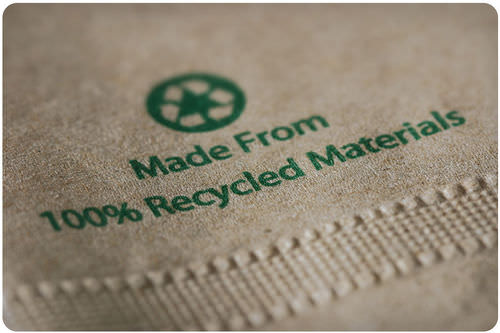资源的利用和节约
章节大纲
-
Lesson Objectives
::经验教训目标- Describe how people use natural resources.
::说明人们如何使用自然资源。
- List ways to conserve natural resources.
::列出保护自然资源的方法。
Lesson Vocabulary
::词汇表课程- conservation
::保护
- natural resource
::自然资源自然资源自然资源
- precycling
::预处理
Introduction
::导言A natural resource is anything in nature that humans need. Metals and fossil fuels are natural resources. But so are water, sunlight, soil, and wind. Even living things are natural resources.
::自然资源是人类需要的自然事物,金属和化石燃料是自然资源,水、阳光、土壤和风也是自然资源,甚至生物也是自然资源。Using Natural Resources
::利用自然资源We need natural resources for just about everything we do. We need them for food and clothing, for building materials and energy. We even need them to have fun. Table gives examples of how we use natural resources. Can you think of other ways we use natural resources?
::我们需要自然资源来做我们所做的一切。我们需要自然资源来做我们所做的一切。我们需要自然资源来做食物和衣服,建筑材料和能源。我们甚至需要它们来玩乐。表格举例说明了我们如何使用自然资源。你能想到我们使用自然资源的其他方法吗?Use Resources Example Vehicles
::车辆车辆Rubber for tires from rubber trees
::橡胶树轮胎橡胶橡胶橡胶Steel frames and other metal parts from minerals such as iron
::钢框架和铁等矿物的其他金属部件iron ore
::铁矿石Electronics
::电子Plastic cases from petroleum products
::石油产品中的塑料案件Glass screens from minerals such as lead
::来自铅等矿物的玻璃屏幕lead ore
::铅矿石Homes
::住居家庭Nails from minerals such as iron
::铁等矿物的奈甲Timber from trees
::来自树木的木材spruce timber
::采采木材Jewelry
::珠宝Gemstones such as diamonds
::钻石等宝石Minerals such as silver
::银等矿物silver ore
::银矿石Food
::食品食品食品Sunlight, water, and soil
::阳光、水和土壤Minerals such as phosphorus
::磷等矿物corn seeds in soil
::土壤中的玉米种子Clothing
::服装服装Wool from sheep
::绵羊的羊毛Cotton from cotton plants
::来自棉花植物的棉花cotton plants
::棉花棉花植物Recreation
::娱乐Water for boating and swimming
::划船和游泳用水Forests for hiking and camping
::用于登山和露营的森林pine forest
::松林林Some natural resources are renewable. Others are not. It depends, in part, on how we use them.
::有些自然资源是可再生的,另一些则不是,部分取决于我们如何使用这些资源。Renewable Resources
::可再生能源Renewable resources can be renewed as they are used. An example is timber, which comes from trees. New trees can be planted to replace those that are cut down. Sunlight is a renewable resource. It seems we will never run out of that!
::可再生资源在使用时可以更新。木材就是一个例子,木材来自树木。可以种植新的树木来取代被砍伐的树木。日光是一种可再生资源。我们似乎永远不会用完。Just because a resource is renewable, it doesn't mean we should use it carelessly. If we aren't careful, we can pollute resources. Then they may no longer be fit for use. Water is one example. If we pollute a water source it may not be usable for drinking, bathing, or any other type of use. We can also overuse resources that should be renewable. In this case, the resources may not be able to recover. For example, fish are renewable resources. That's because they can reproduce and make more fish. But water pollution and overfishing can cause them to die out if their population becomes too low. Figure shows another example.
::资源是可再生的, 并不意味着我们应该不小心地使用。 如果我们不小心, 我们可以污染资源。 然后它们可能不再适合使用。 水就是一个例子。 如果我们污染水源, 它可能不能用于饮用、 洗澡或任何其他类型的使用。 我们还可以过度使用应该可再生的资源。 在这种情况下, 资源可能无法回收。 例如, 鱼类是可再生资源。 这是因为它们可以繁殖和生产更多的鱼类。 但是水污染和过度捕捞可以导致它们死亡, 如果它们的人口过低的话。 图显示另一个例子 。Forests should be renewable resources. The forest on the left is healthy and is used for recreation. The forest on the right was killed by acid rain.
::森林应该是可再生资源,左边的森林是健康的,用于娱乐,右边的森林是被酸雨杀死的。Non-renewable Resources
::不可再生资源Some resources can't be renewed. At least, they can't be renewed fast enough to keep up with use. Fossil fuels are examples. It takes millions of years for them to form. We are using them up much more quickly. Elements that are used to produce nuclear power are other examples. They include uranium. This element is already rare. Sooner or later, it will run out.
::某些资源无法更新。 至少, 它们无法被更新得足够快以跟上使用。 化石燃料就是例子。 化石燃料就是例子。 它们形成需要数百万年的时间。 我们使用它们的速度要快得多。 用来生产核能的因素是其他的例子。 它们包括铀。 这个元素已经很少见。 迟早, 它会耗尽 。Supplies of non-renewable resources are shrinking. This makes them harder to get. Oil is a good example. Oil reserves beneath land are running out. So oil companies have started to drill for oil far out in the ocean. This costs more money. It's also more dangerous. Figure shows an oil rig that exploded in 2010. The explosion killed 11 people. Millions of barrels of oil spilled into the water. It took months to plug the leak.
::不可再生资源的供应正在萎缩,这使他们更难获得。石油就是一个很好的例子。地下的石油储量正在耗尽。因此石油公司已经开始钻探远在海洋中的石油。这要花费更多的钱。这也更加危险。图中显示2010年爆炸的石油钻井平台,爆炸造成11人死亡。数百万桶石油渗入水中。花了几个月才能堵住漏油。This oil rig was pumping oil from below the ocean floor when it exploded.
::这台石油钻井平台爆炸时正从海底下抽油。Who Uses Natural Resources?
::谁利用自然资源?Rich nations use more natural resources than poor nations. In fact, the richest 20 percent of people use 85 percent of the world's resources. What about the poorest 20 percent of people? They use only 1 percent of the world's resources. You can see this unequal distribution of oil resources in Figure .
::富国比穷国使用更多的自然资源。 事实上,最富有的20%的人使用85%的世界资源。 最穷的20%的人呢? 他们只使用1%的世界资源。你可以看到图中石油资源的不平等分配。The U.S. uses more than its share of oil. What if everyone used resources this way? (Note: Per capita means “per person.”)
::美国的石油使用量超过其石油份额。 如果每个人都这样使用资源呢? (注:人均是指“每人” 。 )Imagine a world in which everybody had equal access to resources. Some people would have fewer resources than they do now. But many people would have more. In the real world, the difference between rich and poor just keeps growing.
::想象一个人人都能平等获得资源的世界。 有些人的资源将比现在更少。 但很多人将拥有更多的资源。 在现实世界中,贫富差距仍在扩大。More People, More Resources
::更多人、更多资源Every 20 minutes, the human population adds 3,500 more people. More people need more resources. For example, we now use five times more fossil fuels than we did in 1970. The human population is expected to increase for at least 40 years. What will happen to resource use?
::每20分钟,人口就会增加3,500人,更多的人需要更多的资源。例如,我们现在使用的化石燃料比1970年增加了五倍。 人类人口预计至少增加40年。 资源使用将如何?Conserving Natural Resources
::保护自然资源How can we protect Earth's natural resources? One answer is conservation . This means saving resources. We need to save resources so some will be left for the future. We also need to protect resources from pollution and overuse.
::我们如何保护地球的自然资源?一个答案是保护。这意味着节约资源。我们需要节约资源,这样一些资源将留给未来。我们还需要保护资源免受污染和过度使用。When we conserve resources, we also cut down on the trash we produce. Americans throw out 340 million tons of trash each year. We throw out 2.5 million plastic bottles alone — every hour! Most of what we throw out ends up in landfills. You can see a landfill in Figure . In a landfill, all those plastic bottles take hundreds of years to break down. What are the problems caused by producing so much trash? Natural resources must be used to produce the materials. Land must be given over to dump the materials. If the materials are toxic, they may cause pollution.
::当我们节约资源时,我们也削减了我们生产的垃圾。美国人每年扔掉3亿4千万吨垃圾。我们只扔掉250万塑料瓶——每小时!我们扔掉的塑料瓶大部分都是垃圾填埋场。你可以看到图中的一个填埋场。在垃圾填埋场中,所有这些塑料瓶需要数百年才能拆掉。产生这么多垃圾造成的问题是什么?自然资源必须用来生产材料。必须用土地来倾倒材料。如果材料有毒,它们可能造成污染。Bulldozers crush a mountain of trash.
::推土机压倒了一座垃圾山The Three "R"s
::三个"R"You probably already know about the three "R"s. They stand for reduce, reuse, and recycle. The third "R" - recycle - has caught on in a big way. That's because it's easy. There are thousands of places to drop off items such as aluminum cans for recycling. Many cities allow you to just put your recycling in a special can and put it at the curb.
::您可能已经知道三个“ R” 。 它们是用于减少、 再利用和再循环的。 第三个“ R” —— 循环利用—— 已经大获成功。 这是因为它很容易。 有数千个地方可以丢下铝罐等物品进行回收。 许多城市允许您将回收放入一个特殊的罐中, 并把它放在路边。We haven't done as well with the first two "R"s - reducing and reusing. But they aren't always as easy as recycling. Recycling is better than making things from brand new materials. But it still takes some resources to turn recycled items into new ones. It takes no resources at all to reuse items or not buy them in the first place.
::前两个“R”-减少和再利用,我们没有做得那么好。但是它们并不总是像回收一样容易。回收比从品牌新材料中制造东西要好。但是,将回收的物品变成新的物品还需要一些资源。它不需要任何资源来重新使用或首先不购买。Reducing Resource Use
::减少资源使用Reducing resource use means just what it says - using fewer resources. There are lots of ways to reduce our use of resources.
::减少资源使用意味着减少资源使用量,有很多方法可以减少资源使用量。- Buy durable goods. Choose items that are well made so they will last longer. You'll buy fewer items in the long run, so you'll save money as well as resources. That's a win-win!
::购买耐用物品。 选择生产良好的物品, 以便它们能持续更长的时间。 从长远看, 你会购买更少的物品, 这样你就可以节省金钱和资源。 这是双赢!
- Repair rather than replace. Fix your bike rather than buying a new one. Sew on a button instead of buying a new shirt. You'll use fewer resources and save money.
::修理而不是更换。 修修你的自行车, 而不是买一辆新的自行车。 缝在按钮上而不是买一件新的衬衫。 你会用更少的资源来节省钱。
- Buy only what you need. Don't buy a gallon of milk if you can only drink half of it before it spoils. Instead, buy a half gallon and drink all of it. You won't be wasting resources (or money!)
::只买你需要的。不要买一加仑的牛奶,如果你在牛奶变卖之前只喝其中的一半。你应当买半加仑的牛奶,你应当全喝掉,不要浪费资源(或钱)。
- Buy local. For example, buy local produce at a farmer's market, like the one in Figure . A lot of resources are saved by not shipping goods long distances. Products bought at farmer's markets use less packaging, too!
::例如,在农民市场购买本地产品,就像图中的数字一样。许多资源通过不长途运输货物而节省。 在农民市场购买的产品也使用较少的包装!
Buying locally grown produce at a farmer's market saves resources.
::在农民市场购买当地生产的农产品可节省资源。About a third of what we throw out is packaging. Try to buy items with the least amount of packaging. For example, buy bulk items instead of those that are individually wrapped. Also, try to select items with packaging that can be reused or recycled. This is called precycling . Soda cans and plastic water bottles, for example, are fairly easy to recycle. Some types of packaging are harder to recycle. You can see examples in Figure . If it can't be reused or recycled, it's a waste of resources.
::我们扔出的大约三分之一是包装物。 尝试以最少的包装物购买物品。 例如, 购买大宗物品, 而不是单独包装的物品。 另外, 尝试选择可以再利用或回收的包装物。 这称为预处理。 例如, 苏打罐和塑料水瓶很容易回收。 有些种类的包装物更难回收。 您可以在图中看到一些例子。 如果无法再利用或回收, 它就是资源的浪费 。- Many plastics: The recycling symbol on the bottom of plastic containers shows the type of plastic they contain. Numbers 1 and 2 are easier to recycle than higher numbers.
::许多塑料:塑料容器底部的再循环符号显示其所含的塑料类型。
- Mixed materials: Packaging that contains more than one material may be hard to recycle. This carton is made mostly of cardboard. But it has plastic around the opening.
::混合材料: 含有一种以上材料的包装可能难以回收利用。 这个纸箱大多由纸板制成,但开口周围有塑料。
These types of packaging are hard to recycle. Could you reuse any of them?
::这些类型的包装很难回收,你能再利用它们吗?Reusing Resources
::资源再利用Reusing resources means using items again instead of throwing them away. A reused item can be used in the same way by someone else. Or it can be used in a new way. For example, Shana has a pair of jeans she has outgrown. She might give them to her younger sister to wear. Or she might use them to make something different for herself, say, a denim shoulder bag. Some other ideas for reusing resources are shown in Figure .
::资源再利用意味着再次使用物品,而不是将其扔掉。再利用的物品也可以被别人用同样的方式使用。或者可以用新的方式使用。例如,莎娜有一件她长得比她长的牛仔裤。她可能把牛仔裤送给妹妹穿。或者她可能用这些牛仔裤给自己做一些不同的东西,比如一个戴尼姆肩膀袋。图中还展示了其他一些关于再利用资源的想法。Do you reuse products such as these? Can you think of other ways to reuse resources?
::您是否再利用此类产品? 您能想到其它再利用资源的方法吗 ?Recycling Resources
::回收资源Many things can be recycled. The materials in them can be reused in new products. For example, plastic water bottles can be recycled. The recycled material can be made into t-shirts! Old phone books can also be recycled and made into textbooks. When you shop for new products, look for those that are made of recycled materials (see Figure ). Even food scraps and lawn waste can be recycled. They can be composted and turned used for the garden.
::许多东西可以回收,其中的材料可以重新用于新产品,例如塑料水瓶可以回收,再生材料可以制成T恤衫;旧的电话簿也可以回收,并制成教科书。当你购买新产品时,可以寻找用回收材料制成的产品(见图 ) 。甚至食品废料和草坪废料也可以回收,它们也可以制成合成材料,转而用于花园。This label shows that the product was made from recycled materials.
::这一标签表明,该产品是用回收材料制成的。At most recycling centers, you can drop off metal cans, cardboard, and paper products, glass containers, and plastic bottles. Recycling stations like the one in Figure are common. Curbside recycling usually takes these items too. Do you know how to recycle in your community? Contact your local solid waste authority to find out. If you don't already recycle, start today. It's a big way you can help the planet!
::在大多数回收中心,你可以丢下金属罐、纸、纸制品、玻璃容器和塑料瓶。像图中那样的回收站很常见。 循环利用中心通常也接收这些物品。 您知道如何在社区中回收吗? 联系当地的固体废物处理机构了解情况。 如果您还没有回收, 请从今天开始。 这是帮助地球的重要方法 !Are there recycling stations like this one where you live?
::你住的地方有这样的回收站吗?Lesson Summary
::经验教训摘要- Natural resources are anything in nature that humans need. Some natural resources are renewable; some are non-renewable. Rich nations use far more natural resources than poor nations. As the human population grows, it will use more resources.
::自然资源是人类需要的自然事物,有些自然资源是可再生的,有些是不可再生的。富国比穷国使用更多的自然资源。 随着人口的增长,它将使用更多的资源。
- Conservation means saving resources. To save natural resources, follow the three “R”s: reduce, reuse, and recycle.
::为了节约自然资源,遵循三个“R”:减少、再利用和再循环。
Lesson Review Questions
::经验回顾问题Recall
::回顾- Define natural resource.
::界定自然资源。
- Name an item you use each day. What natural resources were used to make it?
::你每天都要用什么物品,用什么自然资源来制造?
- Contrast resource use in wealthy and poor nations.
::富国和穷国的资源使用对比。
- What is conservation?
::什么是养护?
- What is precycling?
::什么是预产期?
Apply Concepts
::应用概念- Create a mobile or bulletin board display that shows how to use the three Rs to conserve resources.
::创建一个移动或公告板显示显示显示如何使用三个 Rs来节约资源。
Think Critically
::仔细仔细思考- Compare and contrast renewable and non-renewable resources. Give an example of each.
::比较和对比可再生和不可再生资源。请举例说明其中的每一个。
- Why do we need to use renewable resources carefully?
::为什么我们需要谨慎使用可再生资源?
Points to Consider
::需要考虑的要点Like other resources, we use energy resources in many ways. Energy resources also need to be conserved.
::同其他资源一样,我们在许多方面使用能源资源,也需要保护能源资源。- What are some of the ways we use energy?
::我们使用能源的方式是什么?
- How can we conserve energy?
::我们如何节约能源?
- Describe how people use natural resources.




